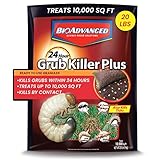Grub worms aren’t worms but are the larval stage of Scarab beetle species in the Scarab family. These worms can damage your lawn by nibbling its roots.
Are grub worms harmful to humans? Grub worms, also known as lawn grub, can cause skin irritation, redness, and rashes. Aside from these cases, there aren’t other known conditions that put grub worms in a bad light, aside from the harm they can inflict on your plants.
If these pests infest your lawn, they can create significant damage to your grass and plants. In this article, we’ll explain more information about grub worms and how to get rid of them.
What Are Grub Worms?
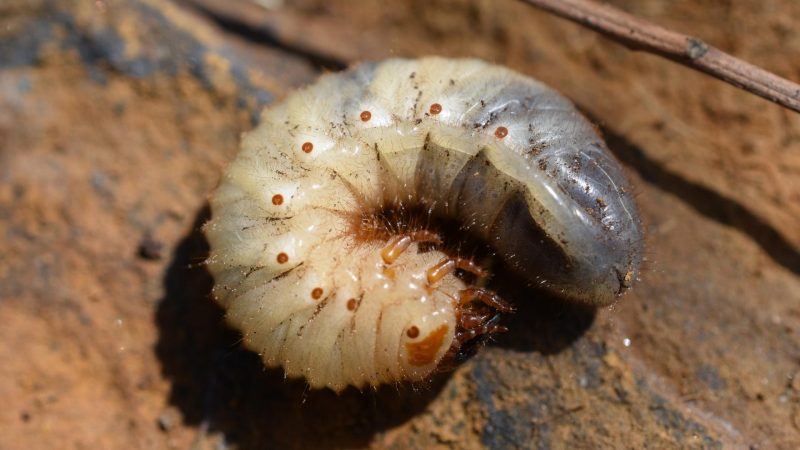
Grub worms are the larval stage of scarab beetle species. They’re mostly found in gardens and many lawns in North America.
These beetle species are also called white grubs and often thrive in places with humid climates. Most of them die during harsh winters, while some survive by burrowing deep into the soil.
Like all beetles, they undergo a complete metamorphosis. They progress through the egg, then into the larva stage, and change into the non-feeding pupa stage until they transform into the adult stage.
As they grow, these grub worms will shed their exoskeleton (molt) between every three distinct larval stages, also known as instars. The bodies of these grubs also grow significantly between each molt.
What Does a Grub Worm Look Like?
Grub worms are plump and C-shaped insects with three pairs of legs. They have strong mandibles and mouthparts, which are visible on bigger larvae.
Furthermore, the color of their heads is brown, and their bodies are soft, grayish-white in color. Their growth varies, depending on their species, but most of them can grow up to 1 inch.
These white grubs also have transparent parts on the upper rear section of their abdomen with noticeable gut contents.
Where Do Grub Worms Live?
Grub worms live below the soil surface of a garden or lawn. They particularly like to remain in exceptionally moist soil and emerge only when they feed on the plants and grasses.
What Does a Grub Worm Turn Into?
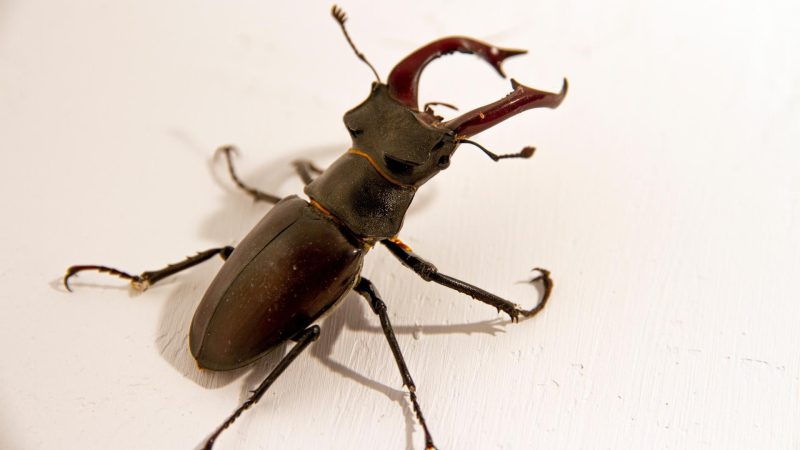
Grub worms will turn into adult scarab beetles and emerge from the ground to mate and lay their eggs. There are eight types of scarab beetles that these grubs might turn into, and these are:
- Japanese beetles
- June bugs
- Asiatic garden beetles
- Black turfgrass ataenius
- Northern and southern masked chafers
- Green June beetles
These grubs don’t have a nice look but will turn out to be attractive once they reach adulthood.
Are Grub Worms Dangerous?
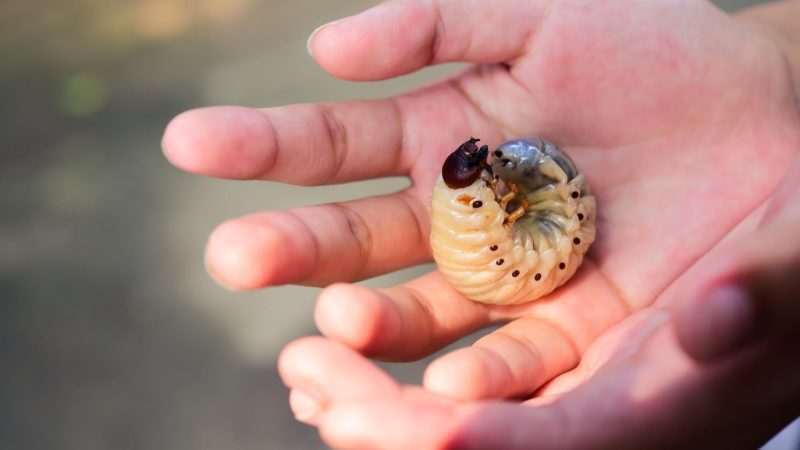
Grub worms aren’t dangerous. They’re not toxic, and in fact, these insects can safely be eaten by dogs and even humans if they’re from sterilized soil. However, once these grub worms crawl in toxic soils, they may ingest them, making the dogs that eat them get sick.
What Causes Grub Worms in Your Yard?
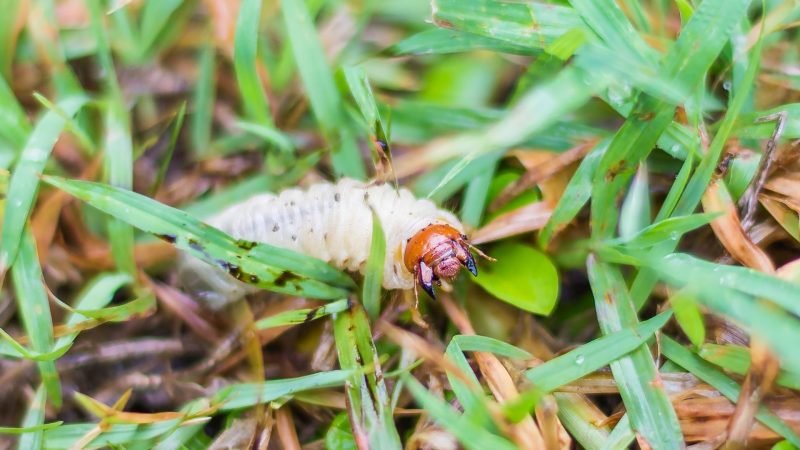
The scarab beetles often choose to lay eggs in healthy and dense grass. So, if your lawn is thick and green, these scarabs will get attracted to your place and make it their nesting place.
Once the eggs of scarab beetles hatched, they will start feeding on your grassroots, affecting the overall health of your lawn. They will then turn into pupae and re-emerge into scarab beetles, repeating the process.
How Do Grub Worms Damage Grass?
Grub worms damage grass by eating its roots. They love humid temperatures, so they start getting active in damaging yards during the spring season. Typically, grub damage is more noticeable in lawns from March to early May or mid-September to November.
How to Detect Grub Worms?
You’ll know that you have grub worms once you notice the following conditions:
- Dead patches in your yard
- Thin and yellow grass
- Spongy lawn
- Easy-to-peel grass
Once you observe these things on your lawn, make sure to take action right away. This way, you might still be able to save your grass from complete damage.
How Do You Get Rid of Grub Worms?
There’s always a chemical or natural solution when it comes to grub worms. For chemical methods, you may consider using the given products below to solve your grub dilemma:
Grub Killer Plus
Grub Killer Plus is an easy granule solution that can effectively kill grubs in 24 hours. This product is also best in killing crickets, earwigs, ants, ticks, and more.
- 24-HOUR GRUB KILLER: Delivers overnight results by killing grubs...
- PLUS INSECT KILLER: Also kills Ants, Ticks, Billbugs, Chinch...
- PREVENTS LAWN DAMAGE: Use at the first sign of grubs to stop...
- COVERAGE AREA: Treats up to 10,000 square feet
- RESTRICTIONS: Not for sale in CA & ME
Scotts GrubEx
One application of this product during early summer or spring can help prevent grubs for four months. This also aids in preventing root damage to ensure a healthy lawn.
- Scotts GrubEx1 Season Long Grub Killer can help prevent turf...
- One application of this lawn care treatment kills and prevents...
- This grub killer also controls caterpillars (armyworm),...
- Apply this granular insecticide to a dry lawn in the spring or...
- One 28.7 lb. bag of Scotts GrubEx1 Season Long Grub Killer covers...
St. Gabriel Organics
St. Gabriel Organics prides itself on long-lasting treatment that may last for 20 years. You also don’t have to worry about applying this grub-killer solution as this is human and pet safe.
- Natural Grub Control: Utilizes Milky Spore, a naturally occurring...
- Long-Lasting Protection: Offers up to 10 years of protection with...
- Safe for Environment: Safe to use around pets, children, and...
- Easy Application: Comes in a 15-pound granular form that is easy...
- Promotes Healthy Lawns: By eliminating destructive grubs, it...
BIOADVANCED Insect Killer
BIOADVANCED Insect Killer can kill ants, grubs, and ticks and give you protection for up to 3 months against these pests. This product works both above and below the ground and kills insects in 24 hours.
- INSECT KILLER: Army worm killer. Also kills listed surface...
- 3 MONTH PROTECTION: Kills listed soil insects for up to 3 months
- USE ON: Soil and turf lawns and around the home
- PLUS MOSQUITO KILLER: Kills mosquitos in addition to 30 other...
- COVERAGE AREA: Treats up to 5,334 square feet
Ortho BugClear Lawn Insect Killer
The Ortho BugClear Lawn Insect Killer has a long-lasting control that protects and guards your lawn against pests like grub worms. The protection of this product can last up to 3 months against beetles, spiders, and ticks.
- Kill all listed bugs, including ants, ticks, armyworms, sod...
- Use on lawns, around a home's perimeter, and on ornamentals, in...
- Fast-acting, kills above and below the ground, and creates a...
- Apply using a Scotts Drop, SpeedyGreen, or EdgeGuard spreader,...
- Provides up to 20,000 sq. ft. of coverage
Meanwhile, this product’s protection can last up to 6 months against ants.
BIOADVANCED Season-Long Grub Control Plus comes in a 2-in-1 formula that effectively kills grubs and other pests all season long. In addition, this product doesn’t only kill grubs but also strengthens the roots of your grass.
No products found.
Note: Make sure to read the label of your chosen product for safe and effective use.
How Do You Kill Grubs Naturally?
If you don’t like to use chemicals in dealing with grubs, you can always utilize natural means to kill them. So, without much further ado, here are the ways to kill grubs naturally:
Dish Soap
One of the natural ways of killing grubs is through using dish soap. To make the solution, just mix one tablespoon of liquid dish soap into a quart of water in a clean spray bottle.
Once done, spray it to the affected area and reapply as needed. This mixture can effectively suppress the larvae, eliminating them before they can harm your lawn.
Milky Spore
Milky spore, also known as Bacillus Popilliae, is an effective bacteria used in killing white grubs. Since this item comes in powder form, you can either sprinkle it directly into the grub worms or mix the powder with water and spray it on your yard using a hose attachment.
Garlic
White grubs, particularly Japanese grubs, dislike garlic scent. This is why it’s a good item to use in getting rid of grubs in the soil.
All you have to do is put at least five to six crushed garlic around your lawn or garden. This will deter the larvae and adults from infesting your turf.
You may also put the crushed garlic inside a spray bottle and put enough water into it. After that, you can spray the mixture around your lawn or garden.
Food-Grade Diatomaceous Earth (DE)
Diatomaceous Earth (DE) is a granular powder containing diatom’s skeletal remains. This powder is helpful in many ways, like eliminating grub worms in your yard.
Once the particles of DE touch insects, they’ll pierce into the insects’ exoskeleton, dehydrating them and killing them eventually. However, this will also eliminate the beneficial insects in your lawn or garden.
So, make sure you apply it sparingly to ensure that the helpful insects in your yard won’t get killed.
Neem Oil
Using neem oil is an effective way of killing grubs naturally. This oil blocks the insects’ hormones that cause them to stop feeding and mating. In addition, they’ll also stop laying eggs in your garden and will get killed eventually due to dehydration.
Just get a spray bottle and put at least half-full water with some drops of neem oil. Once done, make sure to spray it in your yard or garden. Reapply as needed.
Dish Soap and Lemon Juice Mixture
Another home remedy you can use in eliminating grubs is the mixture of dish soap and lemon juice. The acidity and soapy combination of the two ingredients can suffocate the white grubs, killing them effectively.
In a mixing bowl, pour out the lemon juice and blend in some liquid dishwashing soap. Mix thoroughly and put the mixed solution into a clean spray bottle once done. After that, spray the dish soap and lemon juice mixture into the affected areas.
Lemon Juice Grub Repellent Spray
This solution is different from the dish soap and lemon juice mixture. For this repellent spray, you’ll need:
- 3 to 4 cloves of chopped garlic
- 1 tablespoon mineral oil
- 1 quart of warm water
- 1 tablespoon liquid dish soap
Step 1: Get a small container and mix the mineral oil and the 3 to 4 chopped garlic.
Step 2: Put the bowl containing the mixture and leave it overnight.
Step 3: The next day, add a quart of warm water to the solution with a tablespoon of liquid dish soap.
Step 4: Make sure to blend the solution well before spraying it to the affected area.
When to Apply Grub Worm Treatment?
The best time to apply grub worm treatment is when they’re still tiny and close to the surface. This time is around early fall or late summer.
It’s best not to do the treatment during spring since grubs will be too large and less susceptible to treatment.
Summary
Grub worms can cause significant lawn and garden problems. This is because they feed on the roots of grasses and plants, affecting their overall health. As a result, your grasses will turn yellowish, looking so sickly, and will deteriorate the beautiful view of your place.
Therefore, you must take prompt action once you spot some grubs on your soil. This way, you can prevent the worst from happening and save your grass and plants in the process.
List of Sources
Potter, B. (2021). White grubs. University of Minnesota Extension.
Swier, S. R. (2016). White Grubs. University of New Hampshire.
Milky Spore Powder. (2010). United States Environmental Protection Agency.
- How to Get Rid of Turtles | Proven Long-Term Solutions! - August 26, 2023
- How to Get Rid of Kingsnakes | Easy & Humane! - August 26, 2023
- How to Get Rid of Northern Water Snakes | Best Solutions and Preventative Measures! - August 19, 2023

